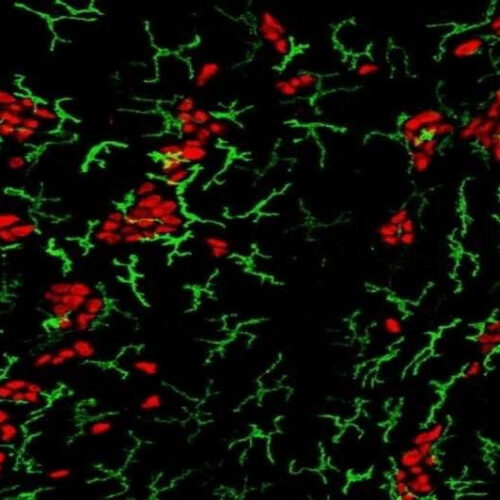by University of Oregon Credit: CC0 Public Domain Sometimes, a gut feeling is literal. Nerves in the intestines help regulate the gut’s acidity, new research from the University of Oregon shows. That helps keep their bacterial communities in balance. “We found an unexpected connection between the nervous system of the intestine and the community of...
Tag: <span>Nervous System</span>
Nervous system consequences of COVID-19
Although severe acute respiratory syndrome coronavirus 2 (SARS-CoV-2) is considered a respiratory pathogen, myriad neurologic complications—including confusion, stroke, and neuromuscular disorders—manifest during acute COVID-19. Furthermore, maladies such as impaired concentration, headache, sensory disturbances, depression, and even psychosis may persist for months after infection, as part of a constellation of symptoms now called Long Covid. Even...
How herpes checks into the nervous system for life
by Northwestern University Herpes simplex virus. Credit: CDC Herpes type 1 is sealed with a kiss for a lifetime. More than half of U.S. adults are carriers of HSV1 (herpes simplex virus type 1) which hibernates in the peripheral nervous system and can never be eradicated. A new Northwestern Medicine study has uncovered the virus’s sneaky...
How foodborne diseases protect the gut’s nervous system
by Rockefeller University Macrophages (green) surrounding enteric neurons (red). Credit: Laboratory of Mucosal Immunology at The Rockefeller University A simple stomach bug could do a lot of damage. There are 100 million neurons scattered along the gastrointestinal tract—directly in the line of fire—that can be stamped out by gut infections, potentially leading to long-term GI...
Researcher advances understanding of how the nervous system controls organs
by Laurie Fickman, University of Houston Credit: Pixabay/CC0 Public Domain An international team of researchers, led by University of Houston Cullen Endowed Professor of biomedical engineering Mario Romero-Ortega, has progressed electroceutical research for treatment of diseases including rheumatoid arthritis, colitis and sepsis. Romero-Ortega partnered with the ARC Centre of Excellence for Electromaterials Science (ACES) at the...
Drug helps sensory neurons regrow in the mouse central nervous system
by Washington University in St. Louis Sensory neurons regrow more after injury when treated with the drug fenofibrate (lower panel) than when given a placebo (top panel; arrows indicate site of injury). Researchers at Washington University School of Medicine in St. Louis have discovered that an FDA-approved drug acts on support cells in the central nervous...
Researchers explore why some MS patients experience seizures
by Stacy Kish, University of California – Riverside Image shows astrocytes (green) in MS hippocampus. Credit: Tiwari-Woodruff lab, UC Riverside. A research team at the University of California, Riverside School of Medicine has identified a pathway involving astrocytes, a class of central nervous system support cells, that could shed light on why seizures happen in a subset of...
Circadian rhythms help guide waste from brain
by University of Rochester Medical Center New research details how the complex set of molecular and fluid dynamics that comprise the glymphatic system—the brain’s unique process of waste removal—are synchronized with the master internal clock that regulates the sleep-wake cycle. These findings suggest that people who rely on sleeping during daytime hours are at greater...
Across the cell membrane
This news or article is intended for readers with certain scientific or professional knowledge in the field. Some of the most essential processes on the planet involves water and energy entering and leaving cells. The cellular doormen responsible for this access are known as aquaporins and glucose transporters, two families of proteins that facilitate the...
A single-cell atlas of nerve cells in the gut reveals web of connections
by Karen Zusi, Broad Institute of MIT and Harvard Cross-section of mouse tissue expressing GFP (green) in all ENS nuclei, and tdTomato (red) in all ENS cells (neurons and glia). The section is also stained with DAPI (blue) to mark all nuclei and an anti-TUBB3 antibody (white) to mark all neurons. Credit: Eugene Drokhlyansky, Chris...









